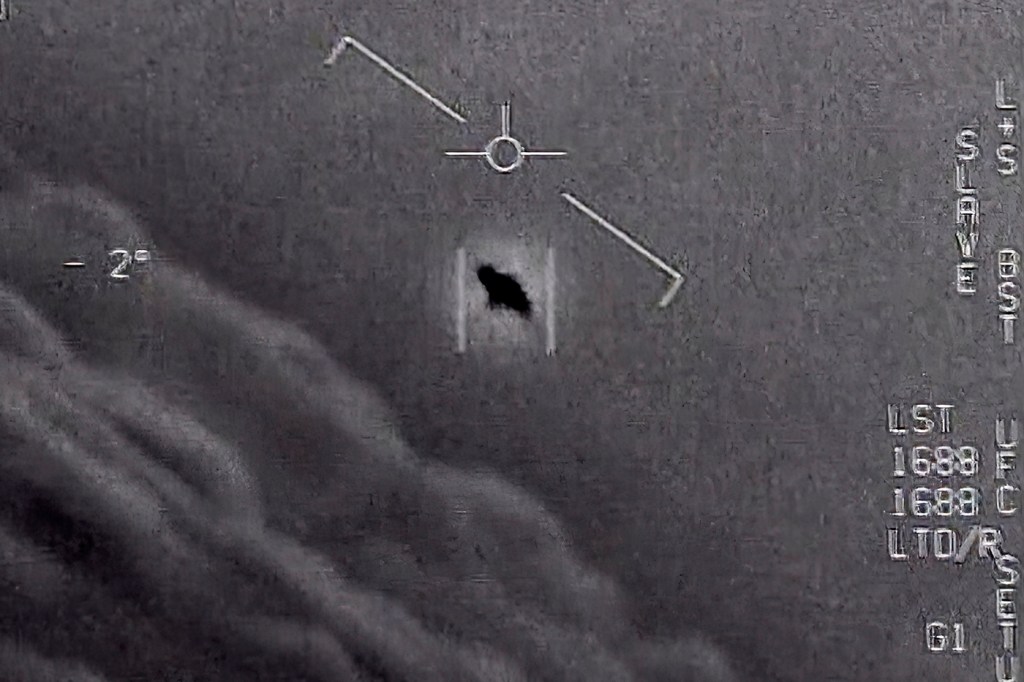Why ‘UFOs’ should be tracked in the water as well as the skies

A much anticipated NASA report on UFOs calls for better tracking and scientific understanding of unexplained phenomena that captivate the public and have raised concerns about military security.
The panel of scientists and government officials convened by NASA kept most of the focus on ways to understand what individuals, including military pilots, say they are observing in the skies.
But UFO reports also are rife with accounts of mysterious objects submerging themselves in the sea, as seen in a video acquired by CNN and other news stations in 2021.
It’s no wonder, says Brian Helmuth, Northeastern professor of marine and environmental science.
He says that while UFOs are “way out of my area of expertise,” the vast mysteriousness of the oceans make them sort of a last planetary frontier — and an excellent vantage point from which to observe goings on on Earth.
“If I were investigating an alien planet like Earth, the ocean would definitely be the place to start. Not only does it comprise the vast majority of living space and living organisms on Earth, but it also is comparatively unpopulated by the one species, humans, that seems intent on destroying the planet,” Helmuth says.

“It would be a great place from which to observe.”
Helmuth says it makes sense that the 16-member NASA panel that issued Thursday’s report included Paula Bontempi, “an oceanographer who also spent 18 years at NASA.”
“She is highly respected in our field and in many ways the ideal person for this committee,” he says.
The scientists and experts on the panel led by astrophysicist David Spergel called for taking a scientific, not sensational approach to the perceived phenomena.
They recommended using AI and machine learning to distinguish between unknown and documented phenomena, ground sensors to observe the skies and the use of crowdsourcing to gather data.
During the NASA press conference Thursday, officials also announced the appointment of an unidentified director of research to lead studies into the phenomena.
All this is a long way from the official disdain in which the government and scientists have held the UFO phenomenon until recent years.
What is a UAP?
Cracks in the government’s official stance on the subject came with the establishment of the Department of Defense’s All-Domain Anomaly Resolution Office to identify UFOs that might pose a threat to national security.
AARO’s formation in 2022 came five years after a blockbuster New York Times story that revealed a secretive DOD program to investigate UFOs and showed the world a declassified video of Navy fighter pilots being outmaneuvered by an oval object that traveled at seemingly mind-boggling rates of speed.
By 2022, the acronym for the phenomena already had undergone an official change from UFO for unidentified flying object — a term still popular with the public — to UAP for unidentified aerial phenomena.
But in December of that year, Pentagon officials said they were changing the terminology to unidentified anomalous phenomena to expand “the scope of UAP to include submerged and trans-medium objects.”
‘Monsters’ of the deep
“Unidentified phenomena in all domains, whether in the air, ground, sea or space, pose potential threats to personnel security and operations security, and they require our urgent attention,” the Pentagon said.
For its part, NASA recommended using advanced sensors on its earth and ocean observing satellite missions, Terra and Aqua, to provide data on what atmospheric and other conditions were like at the time UAPs were reported.
Ever since people went to sea there have been reports of encounters with mysterious sea creatures, including claims that a frigate was attacked in the 1970s by an unknown species of super-giant squid.
“In many ways, with so much of the ocean still unknown, we are objectively not all that far away from the time of ‘there be monsters out there,’” Helmuth says.
Scientists are constantly identifying new undersea life, such as the enormous, 20-armed Antarctic strawberry feather star.
Helmuth says even if the newest UAP research turns out to “mostly be more details about terrestrial, non-alien, phenomena, there is so much to discover on this planet and especially the ocean that it is bound to be fascinating.”
Cynthia McCormick Hibbert is a Northeastern Global News reporter. Email her at c.hibbert@northeastern.edu or contact her on Twitter @HibbertCynthia.






